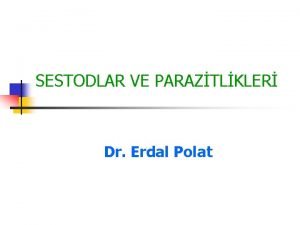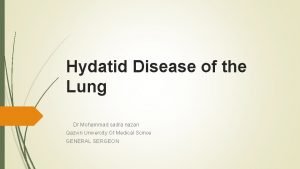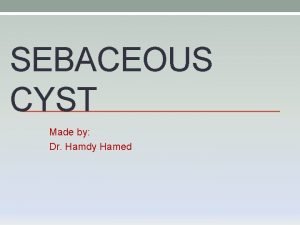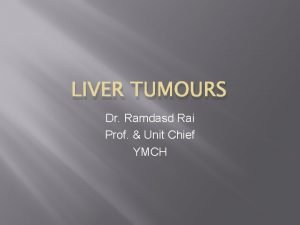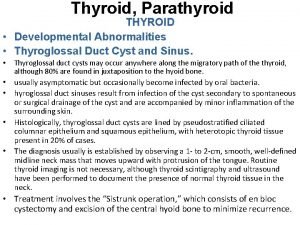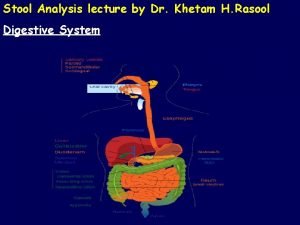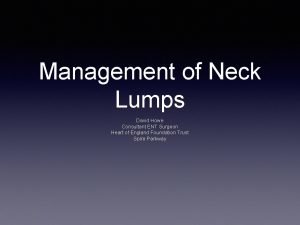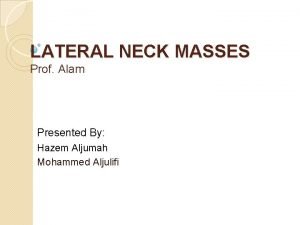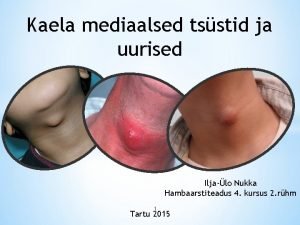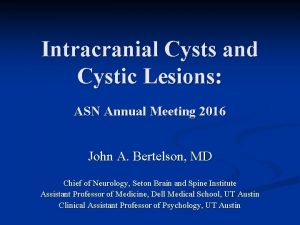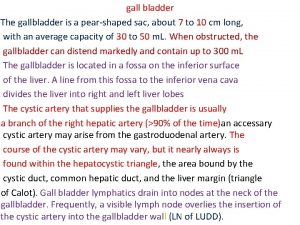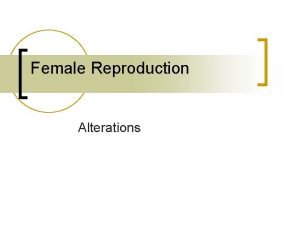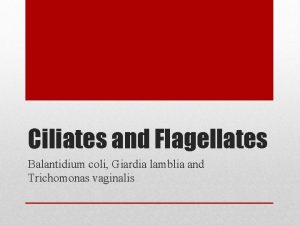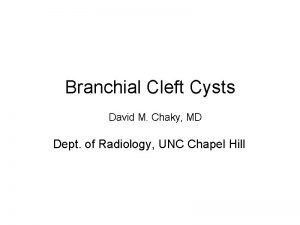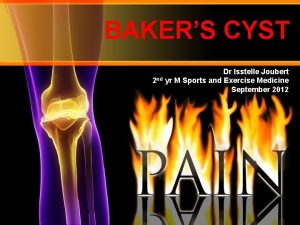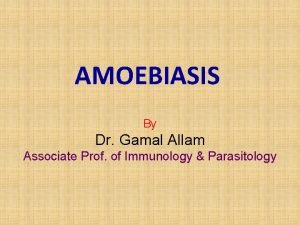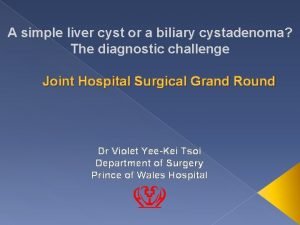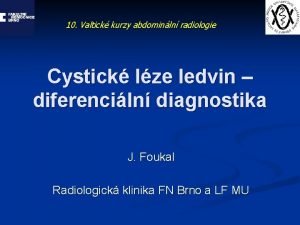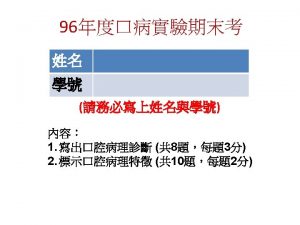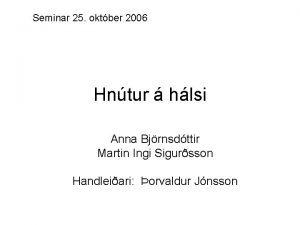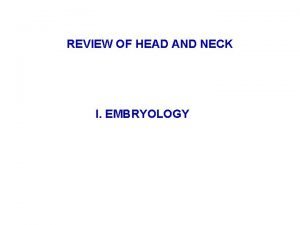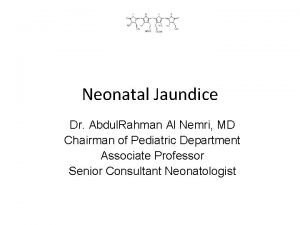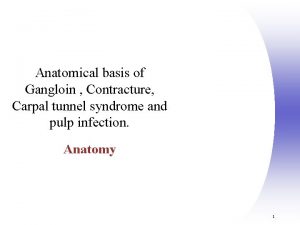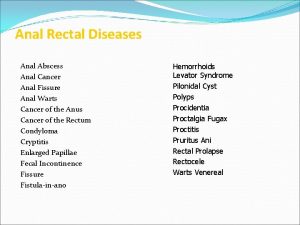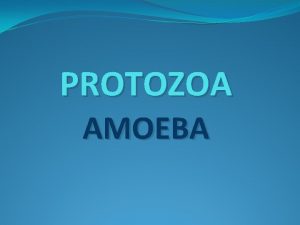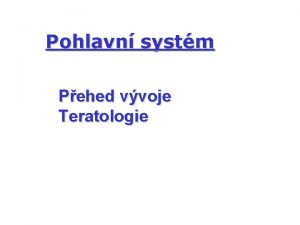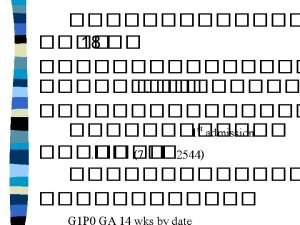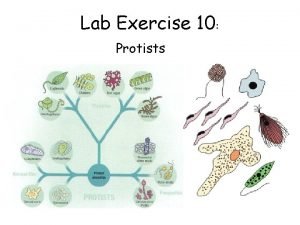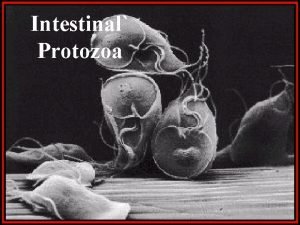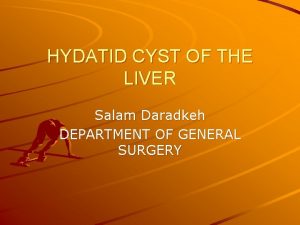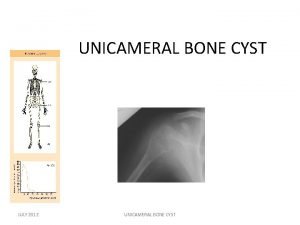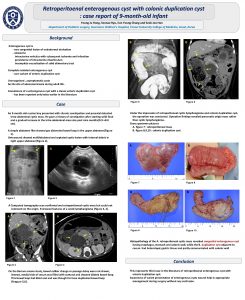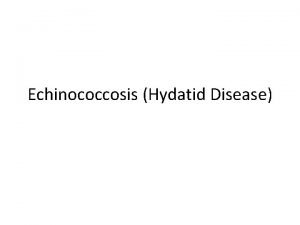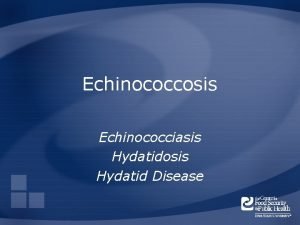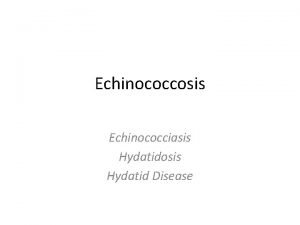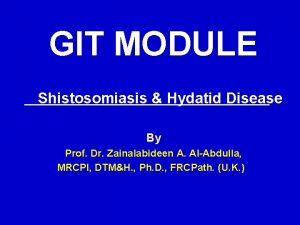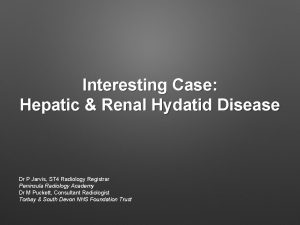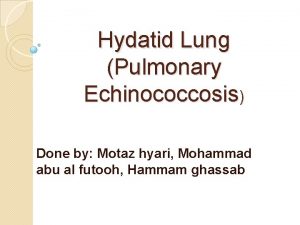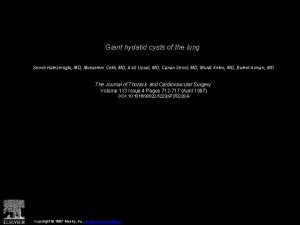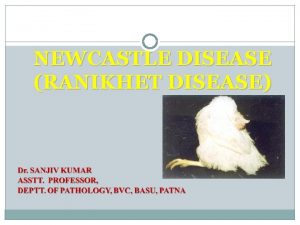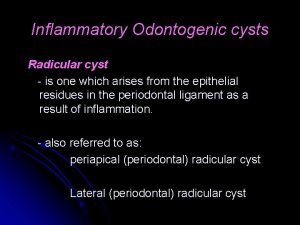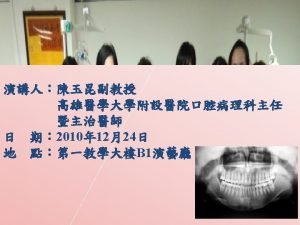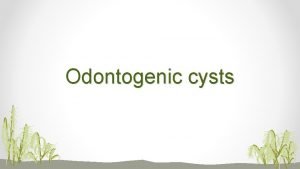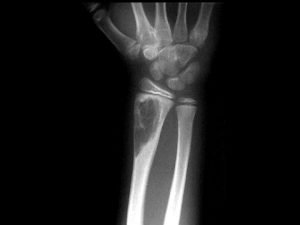HYDATID CYST DISEASE INTRODUCTION Hydatid disease in people



































- Slides: 35

HYDATID CYST DISEASE

INTRODUCTION Hydatid disease in people is mainly caused by infection with the larval stage of the dog tapeworm Echinococcus granulosus. It is an important pathogenic, zoonotic and parasitic infection (acquired from animals) of humans, following ingestion of tapeworm eggs excreted in the faeces of infected dogs.

ADULT WORM

Cystic hydatid disease usually affects the liver (50– 70%) and less frequently the lung, the spleen, the kidney, the bones, and the brain Echinococcus granulosus is spread almost all over t he world, especially in areas where sheep are raised, and is endemic in Asia, North Africa, South and Central America, North America, Canada and the Mediterranean region.

In many countries, hydatid disease is more prevalent in rural areas where there is a closer contact between people and dogs and various domestic animals which act as intermediate vectors.

LIFE CYCLE OF HYDATID DISEASE

LAYERS OF HYDATID CYST Pericyst or adventitia fibrous tissue induced by the expanding parasitic cyst The ectocyst or laminated layer is elastic white covering, easily separable from the adventitia Germinal . layer or endocyst is a single layer of cells lining the inner aspects of the cyst and is the only living component, being responsible for the formation of the other layers. The germinal layer produces clear fluid which attains a pressure of up to 300 mm of water, keeping the endocyst in intimate contact with the pericyst. The endocyst receives its substance from the pericyst.

HEPATIC HYDATID CYST (PATHOLOGY AND LAYERS )

WHO CLASSIFICATION : Group 1: Active group – cysts larger than 2 cm and often fertile. Group 2: Transition group – cysts starting to degenerate and entering a transitional stage because of host resistance or treatment, but may contain viable protoscolices. Group 3: Inactive group – degenerated, partially or totally calcified cysts; unlikely to contain viable protoscolices.

CLINICAL PRESENTATION : The clinical features are highly variable. The spectrum of symptoms depends on the following: Involved organs Size of cysts and their sites within the affected organ or organs Interaction between the expanding cysts and adjacent organ structures, particularly bile ducts and the vascular system of the liver Symptoms due to pressure usually take a long time to manifest, except when they occur in the brain.

Most symptomatic cysts are larger than 5 cm in diameter. Bacterial infection of cysts and spread of protoscolices and larval material into bile ducts or blood vessels Immunologic reactions such as asthma, anaphylaxis, or membranous nephropathy secondary to release of antigenic material

: CLINICAL PRESENTATIONS (HEPATIC) Hepatic hydatid cyst grow slowly and asymptomatic thus tend to be quite large at presentation. Often discovered incidentally during diagnostic work up for un related complaint. Symptomatic patients commonly complain of mild right upper quadrant (RUQ) pain and dyspepsia.

In case of sever abdominal pain it may indicate rupture , biliary complication , or secondary bacterial infection. In case of fever with chills and jaundice indicate intra biliary rupture causing obstruction and cholangitis. Uticaria.

COMPLICATIONS OF HEPATIC HYDATID CYST § § § Rupture ………. . A-internal B- external …. intrabiliary …. intrathoracic …. intraperitoneal Pressure effect; e. g obstructive jaundice Secondary infection Allergic reaction A. urticatia b-brochospasm c-Anaphylaxis d –eosinophilia organ dysfunction : cholangitis , biliary cirrhosis. hepatic failure. Spread , recurrence.

INVESTIGATIONS Laboratory hematological test : elevated total leucocyte count , esinophilia. Liver function test. Renal function test. Serological tests : (IHT), CFT, ELISA, IFAT.

IMAGING STUDIES § § § Plain x-ray of abdomen : elevated right hemdiaphragm , calciftion of cyst. C. X. R: to exclude lung hydatid cyst. Ultrasonograghic study The most important thing is the CT scan of abdomen. ERCP, MRI: for obstructive jaundice, cholangitis.

ULTRASOUND OF THE GALL BLADDER G ( B) AND COMMON BILE DUCT (CBD) SHOWING A DILATED CBD. THE PATIENT PRESENTED WITH JAUNDICE FROM SLUDGE IN THECBD DUE TO DAUGHTER CYSTS TRAVELLING DOWN BILIARY CHANNELS IN COMMUNICATIONWITH CYST.


COMPUTERISED TOMOGRAPHIC (CT) SCAN OF THE UPPER ABDOMEN SHOWING A HYPODENSE LESION OF THE LEFT LOBE OF THE LIVER

CT scan showing liver hydatid cyst (CT) scan showing a hydatid cyst of the pancreas.

Computerised tomographic (CT) scan showing disseminated hydatid cysts of the abdomen (a) and pelvis (b). The patient was started on albendazole and lost to follow-up

MAGNETIC RESONANCE CHOLANGIOPANCREATOGRAPHY (MRCP) SHOWING A LARGE HEPATIC HYDATID CYST WITH DAUGHTER CYSTS COMMUNICATING WITH THE COMMON BILE DUCT CAUSING OBSTRUCTION AND DILATATION OF THE ENTIRE BILIARY TREE

TREATMENT OF HYDATID DISEASE Medical treatment (antihelemthics) Indication …. . Concurrent pulmonary or disseminated disease. …. . Multiple …. . Recurrent …… inaccessible …. . Intaoperative dissemination …… unfit for surgery.

Albendazole 10 -15 mg/kg in 2 divided doses for 28 days. Praziquantil 40 mg /kg +albedazole Mebandazole 40 -50 mg/kg for 6 to 12 months.

PAIR (PUNCTURE-ASPIRATION-INJECTIONREASPIRATION) Indication for PAIR: § Refusal of surgery Inoperable cases Multiple cysts ≥ 5 cm diameter in different liver segments. Relapse post surgery. Lack of response to chemotherapy § §


Contraindication to PAIR : In accessible or hazardous location of cyst. Dead in active cysts Complications: Urticatia , fever , anaphylaxsis , biliary fistula subcpasular haematoma , hypotension shock.

SURGICAL TREATMENT OF HEPATIC HYDATID DISEASE § § § Indication for hepatic surgery : Large cysts with suspected multiple cysts. Superficial cysts with risk of spontaneous or post traumatic rupture. Secondary bacterial infection of cyst. Cystobiliary communication Pressure effects an adjacent.

§ § § Contraindication to hepatic surgery In operable cases Difficult access to cyst Dead cyst Surgical procedures for the treatment of hepatic hydatid disease: open ……. total or partial pericystectomy ……. Marsupialisation and tube drainge with omentoplasty. ……. . Partial resection partial hepatectomy Laprascopic precedure


Complication of hepatic hydatid surgery § Biliary leak. § biliary fistula. § Infection of residual cavity. § Cholangitis Example of scolicidal agent : § 20% hypertonic saline. § Absolute alcohol § Povidone iodine.

PULMONARY HYDATID DISEASE The lung is the second most common organ affected after the liver. The size of the cyst can vary from being very small to considerable size. The right lung and lower lobes are slightly more often involved. The cyst is usually single. The condition may be silent and found incidentally. Symptomatic patients present with cough, expectoration, fever, chest pain and sometimes haemoptysis. Silent cysts may present as an emergency due to rupture or an allergic reaction.

Uncomplicated cysts present as rounded or oval lesions on chest x-ray. Erosion of the bronchioles results in air being introduced between the pericyst and the laminated membrane gives a fine radiolucent crescent

The mainstay of treatment of hydatidosis of the lung is surgery. Medical treatment is less successful and considered when surgery is not possible because of poor general condition or diffuse

Thank you
 Hydatid cyst
Hydatid cyst Hydatid cyst
Hydatid cyst Pair for hydatid cyst
Pair for hydatid cyst Hydatid cyst
Hydatid cyst Sebaceous cyst vs dermoid cyst
Sebaceous cyst vs dermoid cyst Hydatid thrill three finger test
Hydatid thrill three finger test Bharathi viswanathan
Bharathi viswanathan Thyroglossal cyst pathophysiology
Thyroglossal cyst pathophysiology Normal stool
Normal stool Lady neck
Lady neck Kode icd 10 menometrorrhagia
Kode icd 10 menometrorrhagia Branchial cyst aspiration
Branchial cyst aspiration Hambaarstiteadus
Hambaarstiteadus Hippocampal remnant cyst
Hippocampal remnant cyst Pear shaped sac
Pear shaped sac Ovarian cyst bleeding
Ovarian cyst bleeding Giardia lamblia cyst
Giardia lamblia cyst Branchial cust
Branchial cust Human anatomy and physiology 10th edition
Human anatomy and physiology 10th edition Nitmed tutorials
Nitmed tutorials Bakers cyst medscape
Bakers cyst medscape Amboebiasis
Amboebiasis Liver cyst symptoms
Liver cyst symptoms Cysty ledvin klasifikace
Cysty ledvin klasifikace Perichondrial cyst
Perichondrial cyst Branchial cleft cyst
Branchial cleft cyst Embryology of branchial cyst
Embryology of branchial cyst Dr al nemri
Dr al nemri What are periradicular tissues?
What are periradicular tissues? Gangloin cyst
Gangloin cyst Perianal cancer
Perianal cancer Trophozoite stage
Trophozoite stage Gartner duct cyst
Gartner duct cyst Midas menarche interval duration
Midas menarche interval duration E histolytica cyst
E histolytica cyst Entamoeba histolytica infective stage
Entamoeba histolytica infective stage

